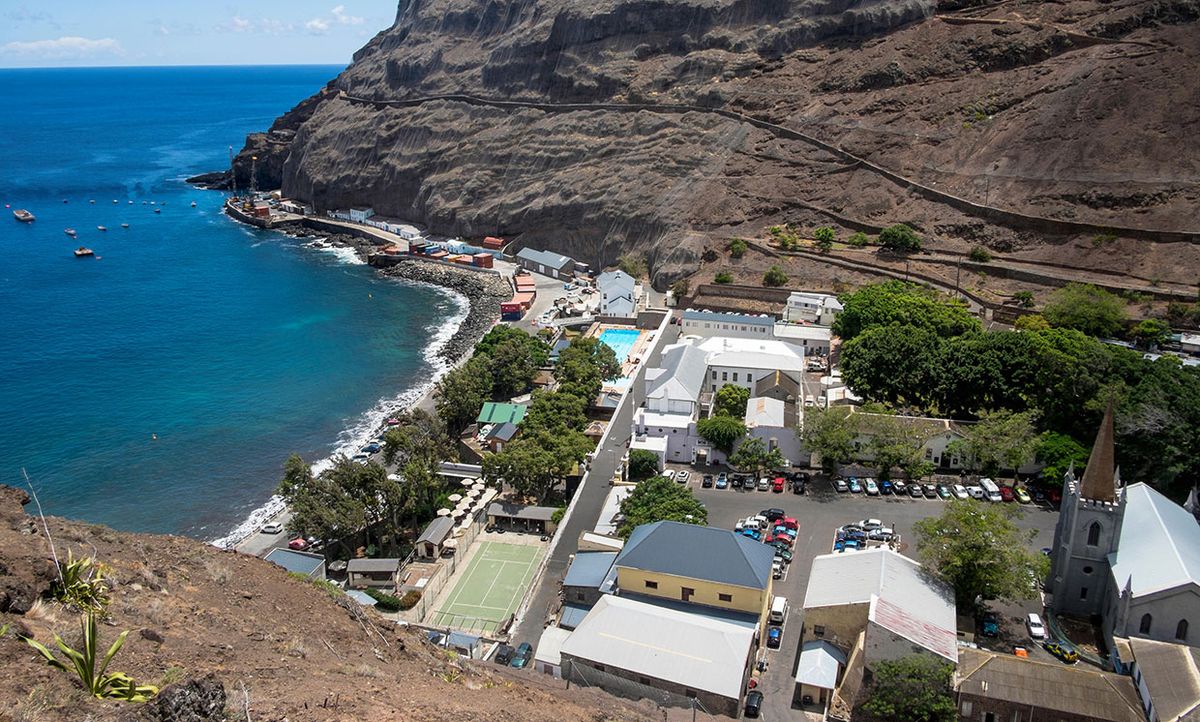If you know anything about the South Atlantic island of Saint Helena, that’s probably because it was the island where the British government exiled Napoleon until he died in 1821. It was actually the second time Britain attempted to exile Napoleon, and the island was chosen for a very specific reason: It’s incredibly remote.
Napoleon is long gone, but the island’s remoteness continues to pose challenges for its 4,500-odd residents. They used to only be able to reach St. Helena by boat once every 3 weeks, though it’s now possible to catch the occasional flight from Johannesburg, South Africa to what’s been called “the world’s most useless airport.” Residents’ Internet prospects are even worse—the island’s entire population shares a single 50 megabits per second satellite link.
That’s about to change, however, as the St. Helena government has shared a letter of intent describing a plan to connect the island to Google’s recently announced Equiano cable. The cable will be capable of delivering orders of magnitude more data than anything the island has experienced. It will create so much capacity, in fact, that St. Helena could use the opportunity to transform itself from an almost unconnected island to a South Atlantic data hub.
Google announced its planned Equiano cable, named for the abolitionist Olaudah Equiano, in June. The company plans to run the cable along the western coast of Africa, connecting Lisbon, Portugal to Cape Town, South Africa. The 1,140-kilometer branch to Saint Helena could be completed as early as August 2021.
The cable will be the first to take advantage of a new technique called fiber-level switching that should drastically improve the cable’s ease of deployment as well as reduce its cost. Traditionally, cables use “wavelength-level switching” to route signals to the correct location. The downside of this approach is that a signal’s optical wavelength has to be adjusted en route, which requires cumbersome equipment to be deployed along the undersea cable.
Fiber-level switching, as the name suggests, doesn’t touch a signal’s particular wavelength. Instead, it mechanically moves the signal to the correct cable, like getting on the right bus to your destination. Fiber-level switching grew out of another recent Google undersea cable development, called space-division multiplexing, which raises the number of fiber pairs that can be packed into a cable.
Of course, more fiber pairs in a cable means more data. For Saint Helena, in fact, it means too much data. The Saint Helena government estimates that the Equiano branch will deliver a minimum of several hundred gigabits per second, and possibly multiple terabits. For an island with fewer than 5,000 residents, that kind of service would be prohibitively expensive, which is why the island’s government is exploring ways to use all this bandwidth.
One idea, according to Christian von der Ropp, who started the Connect Saint Helena campaign in 2011, is to market the island’s location as an ideal spot for satellite ground stations, which connect satellites to the cable backbone of the Internet. The island is well-situated to cover the South Atlantic, a region with few options for a robust backbone connection. Satellite constellation companies like OneWeb have already expressed interest in the island as a possible location for a ground station.
Depending on how many fiber pairs Google runs to the island, Saint Helena could become an important data center hub in the South Atlantic. Google did not respond to a request to comment about how many fiber pairs the company may deploy, but von der Ropp believes that delivering more than one fiber pair could indicate that Google might ultimately extend the cable beyond Saint Helena, all the way to South America.
If that does happen, it “would basically close a ring in the Atlantic,” von der Ropp says. With a few exceptions, all of the cables spanning the Atlantic follow a similar route from the United States to Europe. A South Atlantic cable by Google would provide some much-needed diversity in cable routes, and offer a backup in case something happened to the other trans-Atlantic cables.
The Saint Helena government’s partnership with Google is just one attempt to connect the island. The proposed South Atlantic Express cable, which would stretch from South Africa to Brazil and connect Saint Helena along the way, is in the process of finalizing funding. With multiple efforts now underway, the prospect of connecting Saint Helena to the rest of the world seems more likely than ever.
This article was updated on 24 July 2019 to correct the status of the South Atlantic Express cable.
Michael Koziol is an associate editor at IEEE Spectrum where he covers everything telecommunications. He graduated from Seattle University with bachelor's degrees in English and physics, and earned his master's degree in science journalism from New York University.




